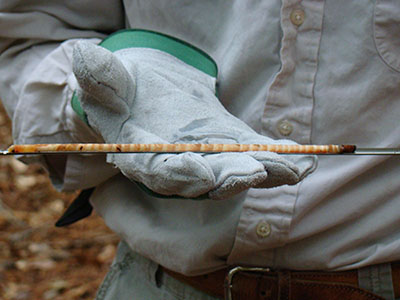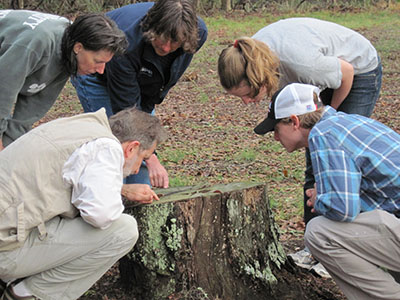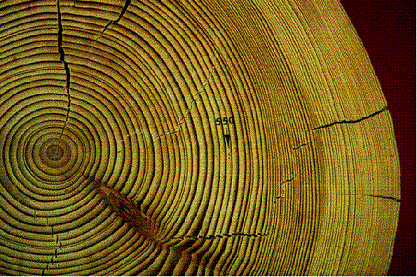Dendrochronology at Wormsloe
The opportunity to integrate environmental history with dendrochronology at Wormsloe is both exciting and unique, because of the rich and careful archival history preserved by the stewards of this landscape. The science of dendrochronology examines inter-annual patterns of tree growth to inform interpretations of landscape history. It can be used to reconstruct past climatic conditions over a period of several centuries (depending on the age and sensitivity of tree species); it can be used to interpret patterns of forest stand development (maximum age of overstory trees, timeline of canopy disturbance based on patterns of growth suppression and release); and it can be integrated with archival information to illuminate the patterns and processes of landscape dynamics, both natural and cultural, that have shaped the modern vegetation.

The current objectives of the Wormsloe dendrochronological study are as follows:
1. to develop an inventory of tree ages across the different vegetation types present in the Wormsloe landscape. This will allow us to link patterns of tree growth across the landscape to past climatic conditions, to develop a multi-century chronology of climatic drought, and to assess the influence of prominent disturbance agents (e.g., logging or other land-use activities, windstorms, bark beetle infestations, or fire) that have shaped the modern vegetation cover.

2. to examine stand-level forest dynamics in and around the network of permanent vegetation plots (to be established in the near future). This will allow documentation of maximum tree ages for dominant species and may provide detailed evidence of stand origin, as well as subsequent canopy-gap forming influences.
3. to integrate our findings with the wealth of archival information already available for Wormsloe. The legacy of human influence in the landscape has become increasingly appreciated by ecologists and historians in the past several decades. Wormsloe, with its rich and well documented environmental history, provides a living laboratory that can be used to reveal profound linkages between vegetation cover and human action.

4. to interpret our principal findings in accessible language, suitable for outdoor education and public outreach. Dendrochronology is a key tool in the interpretive arsenal that is necessary to convey the story of Wormsloe to the people of Georgia and the Southeast. It literally makes that story come alive.
